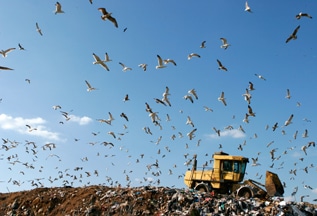In the U.S. from 1929 until the late 1970s, they were manufactured essentially by one corporation — Monsanto. Other manufacturers used these substances in hundreds of commercial products, such as lighting ballasts, caulk and paints. They introduced an estimated 1.5 billion pounds of these toxins into our air, water and soil.
Currently, PCBs are widespread throughout our country. They are found in schools, offices and other buildings. If they are found during the course of renovation, they must be disposed of in a special landfill authorized to accept PCB-containing waste, and the cost of that remediation and disposal is high. High levels of PCBs can also cause health impacts among occupants of the buildings.
Weitz & Luxenberg believes that the costs of removing PCBs from buildings should not be borne by you or the taxpayers, that justice demands you be reimbursed by Monsanto and its affiliated companies, the very corporations ultimately responsible for putting this toxic chemical into the environment in the first place. There exists a 50-50 chance that the schools and government offices in your community contain Monsanto PCBs if they were built between 1950 and 1984.
During that span, construction of more than 48,000 schools took place in the U.S., and close to half of them used materials — especially window and door caulk, and lighting ballasts — laced with PCBs.
Have you been exposed to PCBs as a result of nearby industrial operations? Contact us now for a free evaluation.
Get a Free Case ReviewAdd to that tally tens of thousands more college dorms or residences, libraries, and government offices of all types. Many of them too used PCB-containing construction materials.
Where PCBs Lurk
Typical sources of PCBs include:
- Caulking
- Lighting ballast
- Ceiling tile adhesives
- Paints
As these materials age, they release PCBs into adjoining materials, the air, the soil surrounding the building, or a combination of all three.
Unless and until remediation occurs, the release of PCBs from those materials will continue. And where PCB contamination exists, it likely does so at levels substantially exceeding EPA standards. These levels are established because if they are above the standards, PCBs can cause adverse health effects.
EPA Guidelines for PCB Exposure Often Exceeded
EPA guidelines specify the quantities of PCBs that can be contained in construction and other materials. Yet, survey after survey finds these limits are far exceeded. While the EPA does not impose an affirmative duty to test existing caulk, it has stated that caulk containing PCBs at levels greater than 50 parts per million (ppm) is not authorized for use. It must be removed and, when removed, treated as a PCB bulk waste. This requirement places a substantial, potential cost on building owners as caulking in some public buildings has been found to exceed 200,000 ppm. A San Francisco study found one-third of the tested buildings had caulking that exceeded the 50 ppm limit.
Additionally, the guidelines restrict adult exposure to PCBs in the air to no more than 450 parts per billion for adults. However, in a New York City public school building, the EPA measured airborne PCB concentrations of as much as 2,920 ppb — more than six times the limit. This is critical, since the standard is even lower for children, and many of the affected buildings are schools.
PCBs Last for Decades in Our Environment
PCBs don’t break down easily. As a result, expect them to keep cycling through our environment for decades to come. Soil, water, air, plants, and sea life will continue to manifest the effects of PCBs.
Weitz & Luxenberg has long been concerned about these effects on the environment in and around your locality, on the adults and children you serve, and on your treasury. In response this concern, we represent public entities against the corporations responsible for environmental contamination. On their behalf, we seek reimbursement from Monsanto for the costs of remediating PCB contamination.
Securing reimbursement is vitally important for communities that lack the resources to meet the extremely high costs of remediation.
How Weitz & Luxenberg Can Help
As a nationally recognized environmental, toxic torts, and consumer-protection law firm, Weitz & Luxenberg is committed to helping clients win cases.
For more than 25 years, we have dedicated ourselves to holding irresponsible corporations accountable, and we have obtained more than $17 billion in verdicts and settlements for our clients.
We would feel privileged to assist you. For a free consultation and more information about your legal options, please call us at (917) LAWYERS.
If you prefer, you can complete our form, and our client relations representative will contact you shortly.
